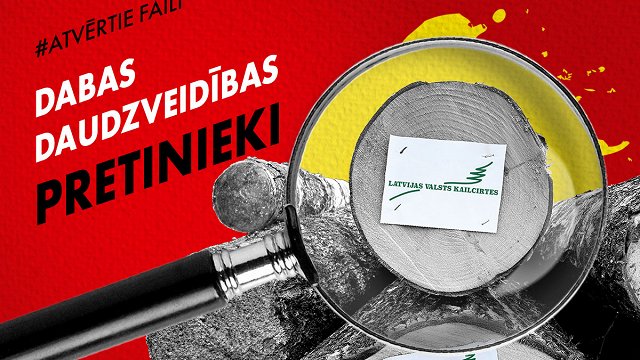When the waters of the Daugava begin to fill the meadows of the floodplains of Dviete, problems with wild horses and cows living in these meadows come to light. The first few dozens imported nearly 20 years ago now have grown to hundreds.
"In 2006, 18 cattle and 22 horses were imported into the floodplains from the Netherlands. Such animals lived in open nature in Europe and Latvia 1000 years ago. Cattle and horses are very good in the floodplains and have grown well. Now their herd is 300 cattle and 80 horses," said the head of the Bebrene municipality, Benita Štrausa.
The animals stay in a paddock, but the existing area is already beginning to become narrow.

"The cattle are grazing in the paddocks of 400 hectares, but the number of animals is currently estimated at hundreds. We don't have anywhere to put these animals now, if the private [landowners] sell them gradually, we'll have to take those paddocks off. We can't shoot those animals, we can't kill pregnant animals. If we remove that paddock there, the animals will have to go in the floodwaters. Then the solution is that we take the fences off so that they go where they want, only then the farmers will shout," said Štrausa.
“The main problem is that private individuals can dictate those rules and that the state doesn't buy land in nature parks. It would be perfect if the state bought land in nature parks,” Štrausa said.
If there are no areas to graze, there is a need to think about the regulation of the number of these animals and also the change of status, said Benita Štrausa.
When these animals were imported into Latvia, they were all registered as livestock in accordance with the regulations and procedures of the European Union. If they were slaughtered and marketed, they would need to be chipped and their blood tested, but they were born and bred in the open and are wild, so it is impossible to do so. But also changing the status to “wild”, is complicated, said by Gita Strode, director of the Nature Conservation Department of the Nature Conservation Agency.
"They are European-level regulations and we cannot accept anything that is against them. Declaring these animals wild animals doesn't solve anything. We'll then be a unique country in the world that names a man-bred animal as wildlife [..] Then they'll be in the same status as the doe, and then we'll have to explain why the hunters shoot them. The solution that can only be done in Dviete is to attract project funding, to make some smaller enclosures so that somehow they can be moved to one side or the other," said Strode.
The Nature Park “Dviete Floodplain” is one of the largest and most well-preserved samples of natural river plains in Latvia and Europe, included in the list of specially protected nature areas of European interest. The LIFE project, in which the conservation of biodiversity has been launched with the help of wild animals has been completed, but the maintenance of the results of the project, namely the preservation of the herd, has to be ensured for nearly 20 years, said Benita Štrausa. The question is how to do no harm to nature or humans.





























